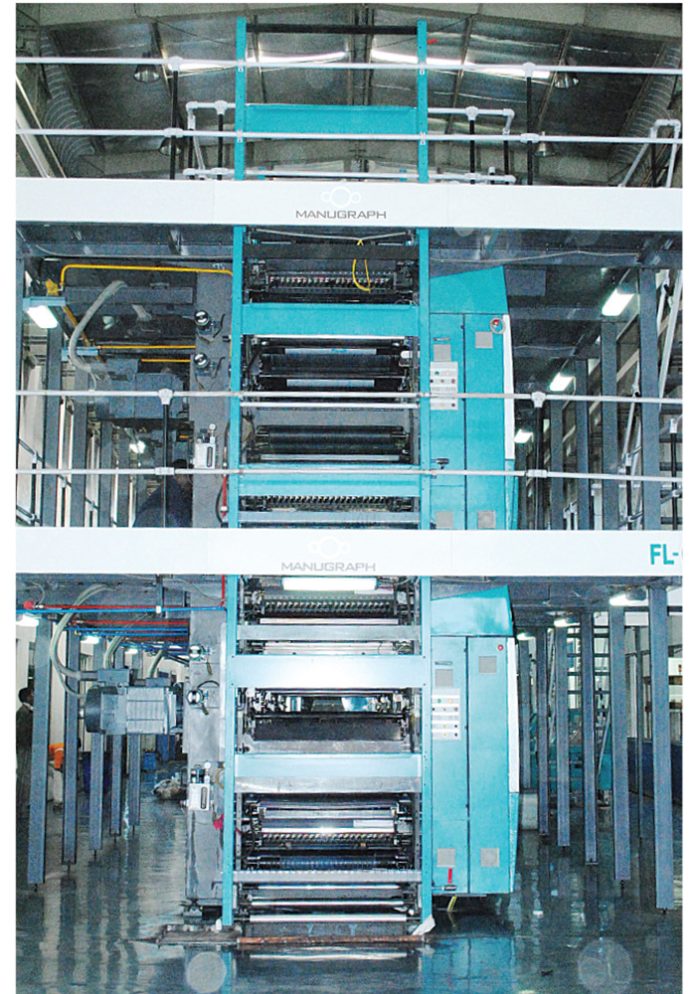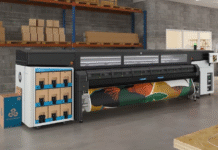
S akal’s main printing plant, about 20 kilometre from Pune city, is equipped with Manugraph Frontline presses that run at 60,000 broadsheet copies an hour. The first installation of the Frontline in India in 2008 was here and now there are four lines, each line with six towers and two folders.
“The setup is excellent and we are very satisfied with the machines,” says Bhausaheb Patil, director (technology) of Sakal adding that Manugraph is ideal for regional dailies like Sakal. “For a regional newspaper like us which has small editions, Manugraph was an ideal choice.”
Elaborating further about the advantages of the Manugraph press, Patil says that it is well suited for domestic newsprint. “We generally use locally sourced newsprint, so installing Manugraph made sense to us,” he adds. Cost viability was another factor, plus the fact that Manugraph’s factories are in close proximity of Sakal’s printing facilities also helped. And one of the most important factors was the brand name. “Manugraph is installed in a majority of newspaper printing facilities of almost all newspapers in India. It is a reputed name in the business.”
The other printing facilities of Sakal have the slower Manugraph Newsline 45 and Hiline presses. While the Pune printing plant, which is the main unit of the newspaper, has a capacity of 8 to 10 lakh copies, the average daily production is currently around 6 to 7 lakh.
For the newspaper industry, the spike in the cost of raw materials like newsprint in recent years has been a matter of concern. Newspapers across the board have adopted ways to manage these costs. Sakal has also taken up various measures to tackle the cost pressure.
“We have implemented six sigma methodology to keep a tab on cost. We have also tried to have an error-free environment where the aim is to minimize wastage,” says Patil. Another step taken is to cut down on pages, reduce wordage. “Need-based page level is maintained.
” There has also been a reduction in newsprint grammage. According to Patil, the newsprint grammage has been reduced from 46 to 47 gsm to 43 to 45 gsm. “We are also testing 40 gsm newsprint varieties,” he says.
Asked if rising competition within the industry and threat from new media have had an impact on advertising revenues, Patil says that this has not had a severe impact on the newspaper, mainly because of Sakal’s reputation.
“Our newspaper is a solid and reputed brand in Maharashtra with a large readership. What adds to the brand value is that our readers are a satisfied lot. That is the feedback we get.”
What keeps the brand reputation of Sakal so solid is its focus on its readers. The newspaper has been fast to adapt to the advent of the digital age and has separate vertical to cater to that segment.
There is a successful ePaper as well as a mobile application. “We have covered all digital platforms,” says Patil arguing that this new platform is adding new readers everyday as internet bandwidth gets cheaper and easily accessible. “There is a great focus on the digital strategy at Sakal. We are in the process of revamping our digital portfolio.”
Finally shifting the conversation to the newspaper industry as a whole amid the current environment, Patil points out that competition is ever increasing, cost of raw material is rising and there is a threat to print from digital, television and radio. He adds that customization of content is another challenge. According to him one has to generate content for delivery on multiple platforms.
“Your environment should be able to handle these multiple delivery platforms. If one has to grab the share of this new and changing environment, one has to change. And almost all newspapers are preparing to take on the situation,” he concludes.












